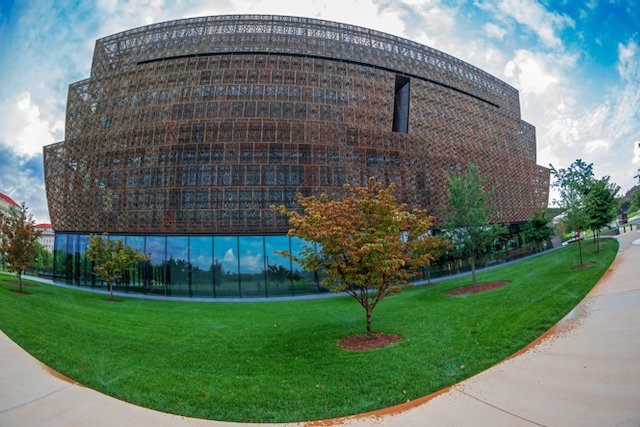National African American Museum of History and Culture – You Should Also be Able to Smell History
Visiting the National African American Museum of History and Culture (NMAAHC) has left my heart and mind reeling. There was so much to take in, and to process. This was my second visit; my first time was for an event in which the guests were able to wander around the museum’s more uplifting upper floors.
This time around, I began on the lower levels, where the enslavement of African people is clearly documented, explained, and displayed. What is most impressive to me though, is the idea and the manifestation of the museum itself. When I consider the great minds that designed and curated this structure and all it encompasses and represents, I am humbled, astounded and so proud. Ghanaian-British Architect, Sir David Adjaye's structure is not just a museum, it is also a shrine to our ancestors, an indelible monument to their strength and resilience, an institution that celebrates all the great and courageous minds of our men and women. It champions our right to humanity, and lays out a hall of fame for African American geniuses. The only thing missing is the truth and power of the scent of our experiences, indeed the smell of it all.
The NMAAHC is truly a feast for the senses. Our eyes take in the wonder, the horror, and the beauty. Our ears absorb the sounds of great orators and talented musicians. There are many opportunities to have interactive experiences on touch screens. Everything is very skillfully curated, including the taste of delectable food at the onsite restaurant. As one who is informed and inspired by scent, I can tell you that the museum smells clean and sanitized in an indiscernible way; you’re not going to notice a smell unless you’re looking for it. However, from the perspective of a scent artist, what is missing is the opportunity to actually smell our history. Imagine the visceral experience that would knock your limbic system into a type of shock from just one inhale of the indescribable stench of a slave ship. Just one sniff and your DNA would go traveling back through time, shaken to its core from the experience of what it was really like.
Can you even fathom the smell of the blood and sweat of flogging – mingled with pain and anger – as well as the homemade salve created by a loved one to soothe and heal the wounds? How does it smell to toil under the hot sun picking cotton and tobacco, and cutting down sugar cane, when you are sick, pregnant, or on your menses? What is the smell of determination, of the cuts and bruises, sweat, and fears of running for your life through the woods, with bounty hunters, horses, and hounds on your trail? Is there a smell that comes with having your own infant snatched from your hands, while having to suckle the baby of your enslaver? Yes, there were smells for all of these experiences.
The idea of scent memory is not far-fetched. Today, some museums are already using scent technology to enhance the authenticity of the visitor’s experience, and I strongly believe it should be developed for the NMAAHC. The scent of a slave ship would impart an understanding to the visitor of any background, beyond sights and sounds, about why reparations are due to the descendants of this experience. Yes, some particular scents would be repulsive, but the encounter would only last a few seconds of what others lived through for a lifetime. No amount of observing, reading, or hearing can take you where scent can go. The only question is, would there be any takers, any visitors who would volunteer to smell it?
The museum is so deft in its design otherwise, with stunning exhibits that are a feast for the eyes and ears. The historical elements of slavery, reconstruction, and Jim Crow begin on lower levels, moving up through mass movements of resistance, and civil rights. As Marcus Garvey said, “Up, you mighty race.” The truth is that our people were always seeking their freedom; they were never docile happy slaves. There was the unstoppable determination of Harriet Tubman and all those she inspired, including Nat Turner, Frederick Douglass, the Tuskegee Airmen, Fannie Lou Hamer, Shirley Chisholm, and the list goes on. We can’t quit, won’t quit, and have continually astounded others with our ability to break records, set new standards, and turn genius, creativity, and improvisation on its head. Indeed, our influence has been exported worldwide.
As we wandered this museum, my sister Linda so aptly observed, “….you can’t help but hear Maya Angelou’s words ringing in your ears saying, And Still We Rise.” From the fields to our handmade crafts, from taking it to the streets, to institutions of higher learning, to the Olympics, to the great stages of theater, opera, and dance, to public office and the presidency, to NASA and beyond, it is all beautifully witnessed within the NMAAHC. But...we should also have the opportunity, if we are courageous enough…to smell it.



